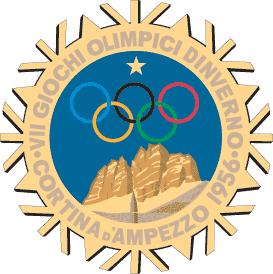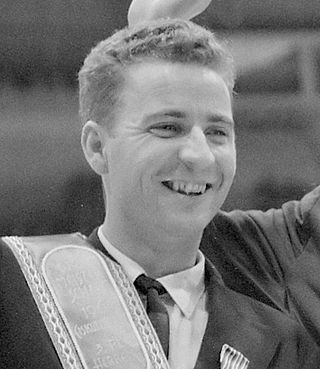
The Winter Olympic Games, also known as the Winter Olympics, is a major international multi-sport event held once every four years for sports practiced on snow and ice. The first Winter Olympic Games, the 1924 Winter Olympics, were held in Chamonix, France. The modern Olympic Games were inspired by the ancient Olympic Games, which were held in Olympia, Greece, from 776 BCE to 394 CE. The Baron Pierre de Coubertin of France founded the International Olympic Committee (IOC) 1,500 years later in 1894, leading to the first modern Summer Olympic Games in Athens, Greece in 1896. The IOC is the governing body of the Olympic Movement, with the Olympic Charter defining its structure and authority. The original five Winter Olympic Sports were bobsleigh, curling, ice hockey, Nordic skiing, and skating. The Games were held every four years from 1924 to 1936, interrupted in 1940 and 1944 by World War II, and resumed in 1948. Until 1992, the Summer Olympic Games and the Winter Olympic Games were held in the same year. A decision to change this was made in 1986, when during the 91st International Olympic Committee session, IOC members decided to alternate the Summer Olympic Games and the Winter Olympic Games on separate four-year cycles in even-numbered years. Also, at that same congress it was decided that 1992 Winter Olympics would be the last to be held in the same year as the Summer Games and that to change the rotation, the games that would be held in 1996 would be brought forward by two years, being scheduled to 1994. After those games, the next were to be held in 1998 when the four-year Olympic Cycle resumed.

The 2006 Winter Olympics, officially the XX Olympic Winter Games and also known as Torino 2006, were a winter multi-sport event held from 10 to 26 February in Turin, Italy. This marked the second time Italy had hosted the Winter Olympics, the first being in 1956 in Cortina d'Ampezzo; Italy had also hosted the Summer Olympics in 1960 in Rome.

The 1968 Winter Olympics, officially known as the X Olympic Winter Games, were a winter multi-sport event held from 6 to 18 February 1968 in Grenoble, France. Thirty-seven countries participated.

The 1960 Winter Olympics were a winter multi-sport event held from February 18 to 28, 1960, at the Squaw Valley Resort in Squaw Valley, California, United States. The resort was chosen to host the Games at the 1956 meeting of the International Olympic Committee (IOC). Squaw Valley was an undeveloped resort in 1955, so the infrastructure and all of the venues were built between 1956 and 1960 at a cost of US$80,000,000. The layout was designed to be intimate, allowing spectators and competitors to reach most of the venues on foot.

The 1956 Winter Olympics, officially known as the VII Olympic Winter Games and commonly known as Cortina d'Ampezzo 1956, were a multi-sport event held in Cortina d'Ampezzo, Italy, from 26 January to 5 February 1956.

The 1964 Winter Olympics, officially known as the IX Olympic Winter Games and commonly known as Innsbruck 1964, were a winter multi-sport event which was celebrated in Innsbruck, Austria, from January 29 to February 9, 1964. The city was already an Olympic candidate, unsuccessfully bidding to host the 1960 Games. Innsbruck won the 1964 Games bid, defeating the cities of Calgary in Canada and Lahti in Finland. The sports venues, many of which were built for the Games, were located within a radius of 20 km (12 mi) around Innsbruck. The Games included 1,091 athletes from 36 nations, which was a record for the Winter Games at the time. Athletes participated in six sports and ten disciplines which bring together a total of thirty-four official events, seven more than the 1960 Winter Olympic Games. The luge made its debut on the Olympic program. Three Asian nations made their Winter Games debut: North Korea, India and Mongolia.
The 1972 Winter Olympics, officially the XI Olympic Winter Games [dai dʑɯitɕi-kai oɾinpikɯ tokikʲogi taikai] and commonly known as Sapporo 1972, were a winter multi-sport event held from February 3 to 13, 1972, in Sapporo, Hokkaido Prefecture, Japan. It was the first Winter Olympic Games to take place outside Europe and North America.

The 1976 Winter Olympics, officially known as the XII Olympic Winter Games and commonly known as Innsbruck 1976, were a winter multi-sport event celebrated in Innsbruck, Austria, from February 4 to 15, 1976. The games were awarded to Innsbruck after Denver, the original host city, withdrew in 1972. This was the second time the Tyrolean capital had hosted the Winter Olympics, having first done so in 1964.

At the 1960 Winter Olympics, eight speed skating events were contested in Squaw Valley, California. For the first time in Olympic history, women participated in the Olympic speed skating events after the USOC's proposal to include the women's events was approved by the IOC. The competitions were held from Saturday, February 20, to Tuesday, February 23, 1960 (women), and from Wednesday, February 24, to Saturday, February 27, 1960 (men).

Karl Schäfer was an Austrian figure skater and swimmer. In figure skating, he became a two-time Olympic champion at the 1932 Winter Olympics and the 1936 Winter Olympics. He was also a seven-time World champion (1930–1936) and eight-time European champion (1929–1936). As a swimmer, he competed at the 1928 Summer Olympics in the 200 metre breaststroke.
Speed skating at the 1984 Winter Olympics was held from 9 to 18 February. Nine events were contested at Zetra Ice Rink.

Sjoukje Rosalinde Dijkstra was a Dutch competitive figure skater. She was the 1964 Olympic champion in ladies' singles, the 1960 Olympic silver medalist, a three-time World champion (1962–1964), five-time European champion (1960–1964), and the six-time Dutch national champion (1959–1964). She was the first Dutch athlete to win a Winter Olympics gold medal.
Colin Edward Hickey was an Australian speed skater. He represented Australia at the 1952, 1956 and 1960 Winter Olympics. His seventh place in the 1956 Winter Olympics was Australia's best result until 1976.
Alain Giletti is a French figure skater. He is the 1960 World champion, the 1955-1957 & 1960-1961 European champion and is a ten-time French national champion. At the age of 12, he represented France at the 1952 Winter Olympics, where he placed 7th. He placed 4th at the 1956 Winter Olympics, and 4th again at the 1960 Winter Olympics.
Figure skating is a sport with participants across the world. Originally based in North America and Europe, the sport has experienced a major expansion in the countries of East Asia. The international governing body of the sport is the International Skating Union (ISU). Only those nations which are members of the International Skating Union are allowed to compete in the figure skating events in the Olympic Games.

Denmark sent a delegation to compete at the 1964 Winter Olympics in Innsbruck, Austria from 29 January to 9 February 1964. This was Denmark's fourth time participating in a Winter Olympic Games. The Danish delegation consisted of two athletes, cross-country skier Svend Carlsen and speed skater Kurt Stille. Carlsen placed outside the top 50 in both his events. Stille finished 9th in the men's 10,000 meters, the best performance by a Danish athlete at these Games.

Karol "Karcsi" Emil Divín was a Slovak figure skater who represented Czechoslovakia. He was the 1960 Olympic silver medalist, a two-time European champion (1958–59), and a two-time World medalist.
Peter Jonas is an Austrian former figure skater. He is the 1965 European bronze medalist. He represented Austria at the 1960 Winter Olympics, where he placed 13th, and at the 1964 Winter Olympics, where he placed 7th.
The men's figure skating competition at the 1952 Winter Olympics took place on 19 and 21 February at Jordal Amfi and Bislett stadion. The compulsory figures were held at Jordal Amfi, while the Free skating was contested at Bislett stadion. The ice surface at Bislett was set inside the oval created by the speed skating track. It was also an outdoor arena, which was used for the opening and closing ceremonies. There were no issues with the weather and the skating surface at Bislett was immaculate. Computers were used for the first time during the figure skating competitions to help tabulate the judges' marks and relay the results instantaneously.
Günter Anderl was an Austrian figure skater who competed in men's singles. He was the 1968 Winter Universiade bronze medalist, 1969 Nebelhorn Trophy champion, and a three-time Austrian national champion (1969–1971). He competed at two Winter Olympics, in 1968 and 1972.











